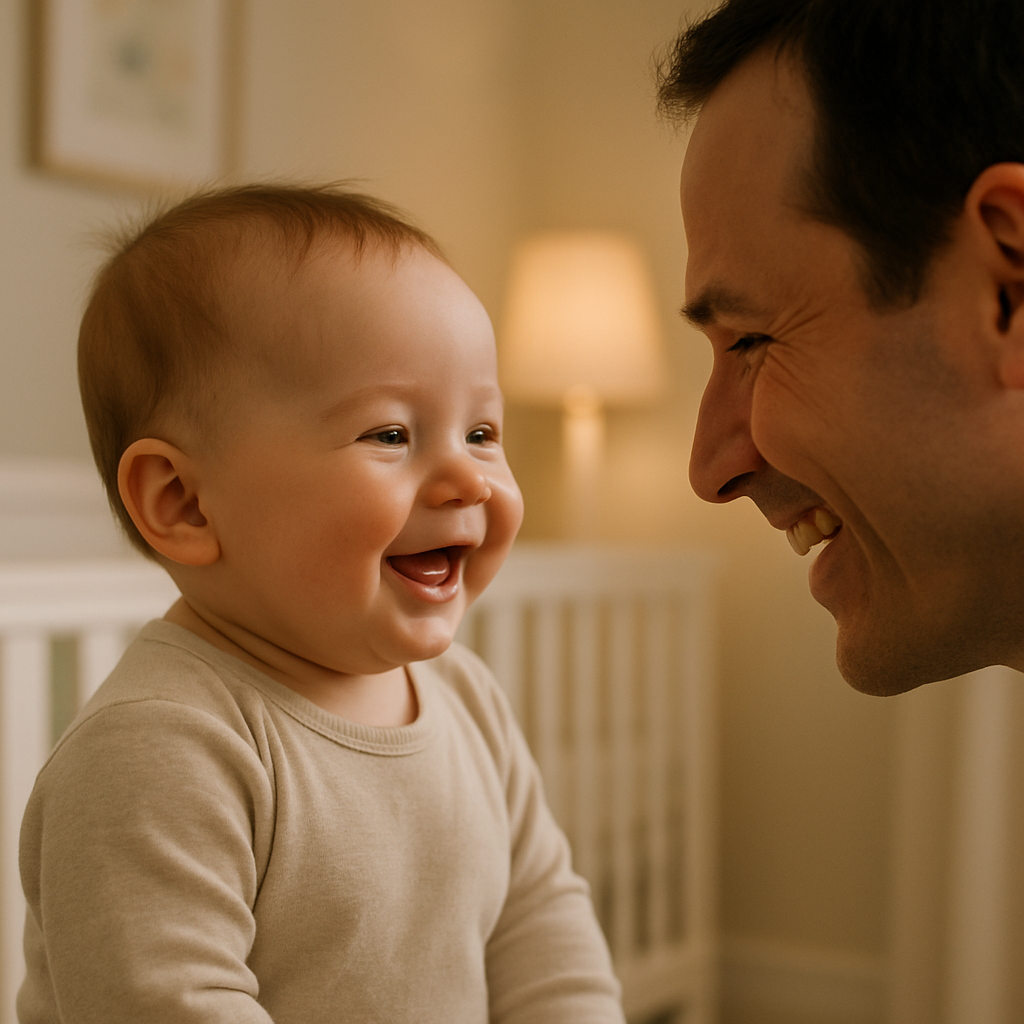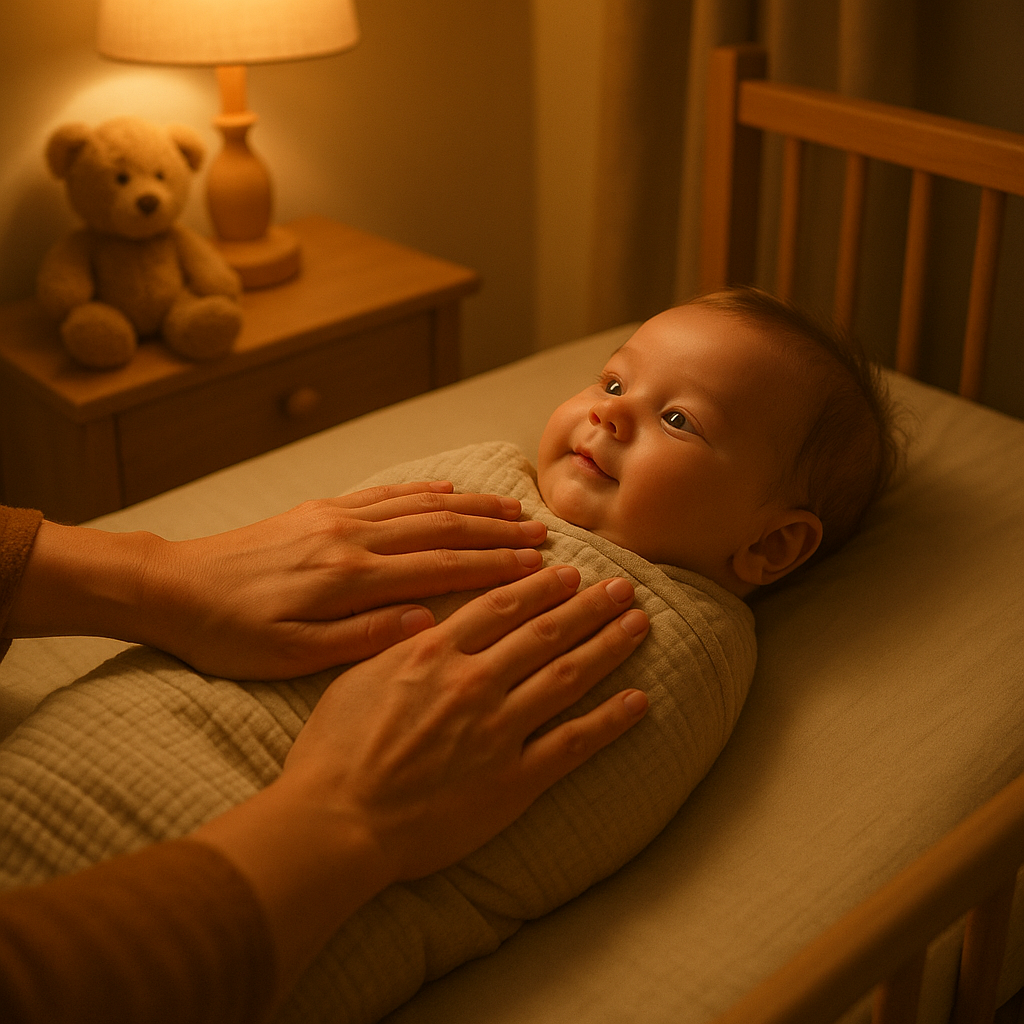Every time you smile, your baby’s brain copies the curve; each frown does the same. From the very first weeks, infants act like emotional mirrors—matching the tone, touch, and expressions around them. Understanding this “emotional contagion” empowers you to nurture lifelong social-emotional health.
- How Do Babies Sense and Mirror Parents’ Feelings in the First Year?
- What makes newborns such keen “emotion readers”?
- When does social referencing begin?
- How does the Still-Face Paradigm prove emotional mirroring?
- Which Everyday Interactions Teach Babies to Name and Regulate Emotions?
- How does serve-and-return play build emotional skills?
- Why should I label feelings out loud?
- Which soothing rituals actually lower stress hormones?
- How Can Parents Close Common Content Gaps & Navigate Special Situations?
- How do I prevent digital distraction from dulling our connection?
- Do cultural styles change how babies learn feelings?
- What if my baby shows early signs of autism or sensory differences?
- Do prenatal emotions reach the baby?
- Can quality daycare support emotional learning?
- What Do Parents Ask Most About Babies Learning Emotions?
- Final Thoughts
How Do Babies Sense and Mirror Parents’ Feelings in the First Year?
What makes newborns such keen “emotion readers”?
Newborns come wired with mirror-neuron networks that fire when they see a face move or hear a voice rise and fall. Within minutes, they will stick out their tongues back at you or calm when you soften your tone. Research shows a newborn’s cortisol can align with a parent’s level in as little as 60 seconds. See Social & Emotional Development for Infants.
When does social referencing begin?
Around 6 months, babies glance at you for emotional guidance before acting. This “social referencing” helps them decide whether to touch a new toy or greet a stranger. By 9 months, most infants reliably follow a caregiver’s smile or wary look.
How does the Still-Face Paradigm prove emotional mirroring?
In this classic experiment, a parent holds a neutral, frozen face. Seventy percent of 4-month-olds show clear distress—writhing, looking away, or crying—within 30 seconds of the sudden silence. The moment you resume warmth, their bodies relax, underscoring how deeply they rely on your cues. What does the ‘still face’ experiment teach us about connection?.
For more on how warm, predictable responses create security, visit Secure Attachment.

Which Everyday Interactions Teach Babies to Name and Regulate Emotions?
How does serve-and-return play build emotional skills?
Back-and-forth games—peek-a-boo, copying faces, babble exchanges—train the brain’s social circuits. Infants who enjoy at least two hours of daily face-to-face play score higher on 12-month emotional responsiveness scales. Find fresh ideas in Serve-and-Return Play.
Why should I label feelings out loud?
Describing emotions (“You look surprised!”) turns fleeting sensations into “feeling words.” Early exposure to affect terms predicts a richer emotional vocabulary by age three. Pair labels with expressive faces so your baby links the word to the look.
Which soothing rituals actually lower stress hormones?
Skin-to-skin cuddles, rhythmic rocking, and gentle stroking drop infant cortisol by up to 30 %. A short evening rubdown, detailed in Infant Massage, signals safety and primes the body for sleep.

How Can Parents Close Common Content Gaps & Navigate Special Situations?
How do I prevent digital distraction from dulling our connection?
Set “device-free windows” during feeds, baths, and bedtime. Forty-five percent of parents check phones while feeding; studies link those glances to shorter eye contact and more infant fussing. Parking your phone even 15 minutes boosts emotional attunement.
Do cultural styles change how babies learn feelings?
Yes, but the core need for responsive care is universal. High-touch Latinx families often use more physical soothing, while East Asian traditions may value calm restraint. Blend approaches that honor your heritage and your child’s temperament.
What if my baby shows early signs of autism or sensory differences?
Eye-tracking studies reveal some autistic infants look at faces less by 6 months. Exaggerated expressions, sing-song speech, and clear labeling can heighten engagement. Seek developmental screening early; tailored interaction still fuels emotional growth. Babies sense parents’ emotions to help understand their world.
Do prenatal emotions reach the baby?
Maternal stress hormones cross the placenta. Mindfulness, light exercise, or brief breathing routines during pregnancy lower fetal cortisol exposure, setting a calmer baseline at birth.
Can quality daycare support emotional learning?
Secure bonds form wherever care is warm and reliable. Compare options in Daycare vs. Stay-Home to choose a setting that maintains serve-and-return rhythms.
What Do Parents Ask Most About Babies Learning Emotions?
-
Can I spoil my baby by responding too quickly?
No—prompt soothing builds trust and later independence. Babies with consistent comfort show stronger self-regulation in toddlerhood. -
Why does my 8-month-old cry with strangers?
Stranger anxiety is a healthy milestone signaling secure attachment. See tips in Stranger Anxiety. -
How do pets influence emotional learning?
Companion animals model empathy and non-verbal cues. Discover benefits in Family & Pets. -
Does a calmer home really rewire the brain?
Yes. Low household stress supports balanced amygdala growth and steadier cortisol cycles. Learn practical steps in Low-Stress Environment. -
Quick checklist for raising an empathetic child?
Start with face-to-face connection, emotion labeling, gentle touch, and consistent routines. Save or share the full list at Empathy Tips.
Final Thoughts
Babies absorb emotions through biology (mirror neurons), behavior (serve-and-return), and context (stress level, culture). By staying present, labeling feelings, and protecting calm moments, you sculpt secure attachment and future emotional intelligence. Explore more brain-boosting ideas in Face-to-Face Play—because every smile you share today shapes your child’s resilience for decades to come.